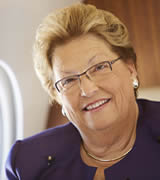| BlueSky Business Aviation News | ||||||||||||||||||||||||||||||||||||||||||||||||||||||||||||||||||||||||
| . | ||||||||||||||||||||||||||||||||||||||||||||||||||||||||||||||||||||||||
She turned to me for research to find out what that kind of diet meant in combination with the other items found in her yearly check-up which potentially affected her higher than normal cholesterol levels. I found that cholesterol is partially hereditary; it passes from one generation to another. This made perfect sense since my father and brother have also had to deal with it. High blood cholesterol is a known major risk factor for coronary heart disease. Understanding cholesterol and its impact upon your health will help when we look at the prescribed diet used today. Cholesterol is essential to life. It strengthens cell walls for other body functions, produces certain hormones and is a vital part of the nervous system and brain. Our bodies produce about 800-1500 ml each day which circulates through the bloodstream. It is soft, almost waxy, and found only in animal foods. That means that plant foods such as grains, fruits, vegetables, nuts do not contain it, BUT, the sauces we cover them with and the cook them in most likely do.
The cholesterol we eat is called dietary cholesterol, while the cholesterol in our blood comes from two sources: from the food we eat and from what the body manufactures itself. For most people the cholesterol we eat has only a small influence on the blood cholesterol. Research has shown that the most concentrated cholesterol found in food comes from offal, i.e. liver, brain and kidney. There is also a significant amount in egg yolk, but, not the white. What is HDL and LDL? Good and Bad Cholesterol? When we consume foods containing cholesterol it gets into the bloodstream. Substances called low density lipoproteins (LDLs) carry cholesterol from the liver (where it is formed) to cells throughout the body. Excess cholesterol is deposited on artery walls. These deposits called “plaques” can build up over time and can contribute to coronary heart disease. Another blood cholesterol called high-density lipoproteins (HDLs) carries the extra cholesterol away from the artery walls and back to the liver for reprocessing or removal from the body. HDL helps prevent cholesterol build-up. The most common diet suggestion is to reduce fat in your diet. Later we will discuss an alternate theory currently evolving. Here are a few simple suggestions for reducing fat intake when menu planning for a passenger or flight crew member who needs to reduce their cholesterol:
I’ll explain what is normal and what is not based on published acceptable levels. Below is a list of medically accepted Serum Cholesterol classifications. LDL Cholesterol- MAKES UP 60-70 % OF TOTAL BLOOD CHOLESTEROL
HDL Cholesterol- ONE THIRD TO ONE FOURTH OF THE CHOLESTEROL IN YOUR BLOOD
If you reduce your total cholesterol level by 1%, you reduce your heart attack risk by 2%; reduce from 250 to 200mg/dl (a 20% decrease) you reduce your risk by 40%. This can be huge for a flight crew member or passenger if planning goes into the catering orders. Three substances (saturated fat( in animal fats), trans fat( primarily in commercial products made with hydrogenated oil), and cholesterol), especially saturated fats are dietary villains that cause blood levels of LDL to rise. Percentages of Saturated and Unsaturated fats in Commonly Used Oils and Fats
Recently experts have begun to disagree about the insistence on a low-fat diet or a diet that excludes fat intake. We need fat in our diet. Saturated fats are solid at room temperature and are found mainly in animal products. Unsaturated fats are fats that are liquid at room temperature and are found mostly in plant sources. Easy, distinctions? Fats are necessary; they help keep our bodies healthy. Just look at the list of reasons the new direction in low cholesterol diets is shifting away from fat-free recommendations.
Food Fat Breakdowns:
A Note on polyunsaturated vegetable oils: Olive, canola, and corn oil are not high in saturated fat. If you are charged with the responsibly to plan and order (cholesterol lowering) catering for a passenger or flight crew member, request seasonings of fresh herbs and spices. They provide a wonderful flavor to foods. Order balsamic vinegar, herb and fruit vinegars, peppercorns, and chilies. They add a highly flavored ingredient for a salad or sauce. The spicier and more flavorful the better the taste at altitude. Avoiding fried foods should be easy since these foods do not reheat well on an aircraft. Request low fat mayonnaise, low-fat cream cheese, low-fat salad dressing, low-fat milks and other dairy products. When ordering chips and crackers, ask for the baked variety. We all share the same goals of health, long life, happiness, and joy in life. Low cholesterol diets do not have to limit your pleasure in attaining these goals. To achieve them, you need to establish a balanced overall eating pattern, a basic diet which includes foods from all the basic food groups. Often, you can achieve this by simply reducing the portion of what you are eating. If you enjoy a lot of something that you are trying to limit, such as fats, be especially careful to eat less over a period of time. Cholesterol is becoming commonplace for many cultures and does raise our coronary heart disease risk. Simple changes in your diet, selecting the right fats, adding more fibers, and watching portion size can help reduce your cholesterol intake.
Let me introduce myself . . . My name is Paula Kraft and I am founder and President of Tastefully Yours Catering, an aviation specific caterer, located in Atlanta, Georgia for over 35 years.
Currently I am an active member of the NBAA Flight Attendant Committee Advisory Board and the NBAA International Flight Attendant Committee, Women in Corporate Aviation, Women in Aviation International, National Association of Catering Executives, International Flight Catering Association, the International Food Service Association and the International Caterer’s Association. I have coordinated training programs and clinics for NBAA and EBAA conference attendees for over 10 years, created mentoring programs for caterers and flight attendants to broaden their aviation culinary skills, and to assist them in adapting to the unique challenges and constraints found in catering for general aviation. I recognize the need for training and have worked closely with flight departments, flight crews, schedulers and customer service reps at the FBOs to ensure that catering specific training provides information and skills necessary to reduce risk while assisting them in their job duties that include safe food handling, catering security, accurate transmission of food orders, and safe food production, packaging and delivery. I fell into aviation catering quite by accident. I was the in-house caterer and bakery supplier for Macy’s department stores in Atlanta when catering was ordered for a Macy’s customer which was soon to change my life. After the client enjoyed the catering provided, I was summoned to the client’s corporate office to provide several of the items delivered through Macy’s to the executive dining room. Within a week, I was providing food for the flight department and my first order was for the President of a foreign country (as I was too be told soon after). So, here I am, some 35 years later, still loving every minute of every day in aviation catering.
|
||||||||||||||||||||||||||||||||||||||||||||||||||||||||||||||||||||||||





